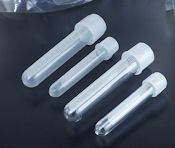Serial Dilutions Procedures:
1. Start a serial dilution test for each sample in order to calculate the yeast and mold densities per cm³. Do the serial dilution test for each sample in order to calculate the yeast and mold densities per cm³.
2. Use a clean, new transfer pipette to add 10ml to a 15ml
culture tube. Label the tube “10°.”
3. Use the same pipette to add 9ml to a second 15ml
culture tube. Label the tube “10¯¹.”

4. Repeat steps 2 one more time to one additional
15ml culture tube, only label it “10¯²” respectively.
5. Place 1cc of your soil sample into the “10°”
culture tube.
6. Cap the tube and shake vigorously.

7. Using a new clean pipette, remove 1ml of the soil/water mixture from “10°” tube and place into the “10¯¹” tube.
8. Cap and shake vigorously.
9. Using the same pipette in step 5, remove 1ml of
the soil/water mixture from the “10¯¹” tube and place into the “10¯²” tube.
10.Cap and shake vigorously.

11.You should now have a total of three culture
tubes.
12. Place 100 µl samples from each tube (dilutions
10°, 10¯¹, and 10¯²) onto a nutrient agar plate.

13.Examine the plates for Fungi after 48 to 72 hours. Record Data. In order to record this data, you must look at the sample's plates(dilutions 10°, 10¯¹, and 10¯²). You must count the yeast and mold amounts on the plate, and record how many you see. The yeast are the more distinct dots, while the mold are the fuzzier circles. Start by looking at dilution 10¯², and if it has no yeast/mold, then you go to the next plate of that sample. Record how many of yeast and mold you count, as well as the dilution it was in: 10°, 10¯¹, and 10¯². Then, in order to find the correct amount of yeast and mold, you must take the number you counted, multiply it by 10², and then multiply that number by the dilution it was found in (except it would be "10" to a positive number instead of a negative number. This number will give you the total amount of yeast/mold. To find the total fungi, you add the total amounts of yeast and mold together, and that gives you the fungi amount. To see an example of the recorded and calculated data, click here and scroll down to "Raw Data".